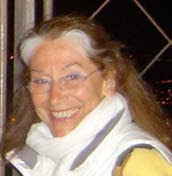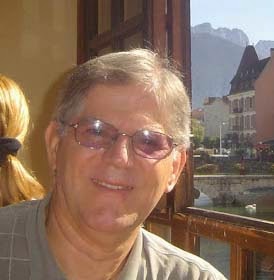By Tom Kando
Having just returned from Europe, I suppose I should report to you about the recent air crisis.
On April 14, Iceland’s Eyjafjallajökull volcano erupted. As a result, there began the next day a near-total cessation of all air travel in and out of Western Europe. All air traffic was grounded. Hundreds of thousands of passengers were stranded at airports from Oslo to Milan, from Belfast to Frankfurt. Local and transatlantic travel came to a complete halt. The days passed, soon a week went by, with no end in sight.
This unprecedented disruption of world travel and commerce even dwarfed 9/11, when flights resumed after 4 days. Coincidentally, yours truly happened to be in the thick of things, having just spent nearly a month in Holland and scheduled to fly back to California on April 21. Miraculously, I suffered no delay. For it was precisely on April 21 that KLM and the Dutch authorities, among a few others, decided to resume at least some flights in and out of Amsterdam. I was one of the few lucky people whose flight was re-instated. Hundreds of thousands of others were no so lucky. Airports in Brussels, Dusseldorf, Copenhagen, all of Britain and Scandinavia remained totally shut down.
Among my own acquaintances, the unlucky people included this blog’s co-manager Madeleine (maybe she’ll report her frustrations to you herself). Madeleine was scheduled to fly to Holland on April 17, and of course that didn’t happen. Others close to me who were also negatively impacted included my French Aunt Maria who was visiting from Lyon and couldn’t fly back, a young California friend named Tyke, who got re-scheduled to fly back from Holland an entire week (!) later - he is still in Amsterdam as I write this!
As we all sweated things out over the past few days, not knowing when we would be able to fly, and who among us would get out and who wouldn’t, there was a lot of conjecture about the situation: Did the authorities handle things right? What about the pain and the cost to stranded passengers (many sleeping on the floor across European airports for a week), to the airlines (losing $200 million a day), to the economy, to Iceland?
Looking at the superb, cloudless, clear-blue sky over Holland, I said something un-educated but common-sensical, early on: "It’s hard to believe that flying is dangerous...Is it really necessary to ground all flights all over Western Europe ?"
I know, safety must come first. Those tiny silica critters that make your engine stop and make you crash are invisible, floating at 40,000 feet. What do I know? Still, clear-blue skies, all the way to the sun; zero ashes anywhere in Holland, in the air or on the ground.
When Mount St. Helens blew in 1980, the sky over Sacramento - thousand miles away - got really dark. When Mount Spur blew in Alaska in 1992, I happened to be in Anchorage. You should have seen the city: carpeted with a centimeter-thick layer of ash. We had to wear breathing masks outside. But now? Absolutely nothing noticeable, not in Holland anyway.
After about five days, I began to read articles (in the Herald Tribune, the NRC Handelsblad) and I saw televised panel discussions which vindicated my own uninformed feelings: Many experts said that the authorities had over-reacted. True, flying in some areas was dangerous - in Britain, Ireland, anything close to the event, any place affected by the wind. However, air travel in many other sectors was perfectly safe. This was confirmed by dozens of test flights. (The wholesale prohibition on flying had been based on computer models). If you avoided Iceland by safely flying to the south, transatlantic crossings should be no problem.
Of course, the airlines had been saying this all along. So, slowly, Europe realized that the blanket grounding of nearly all flights was costly and unnecessary, and bit by bit flights resumed. I was one of the early beneficiaries of the authorities’ return to their senses.
And another thing: The Boeing 777 which took me back to San Francisco had over 400 passengers, but I noticed many empty seats, with some people sleeping comfortably sprawled out over two or three adjacent seats! What’s going on? Why is Tyke still waiting in Amsterdam, along with thousands of others?
Finally: If you can spell and pronounce the volcano’s name - Eyjafjallajökull - you deserve a PhD in linguistics. leave comment here









